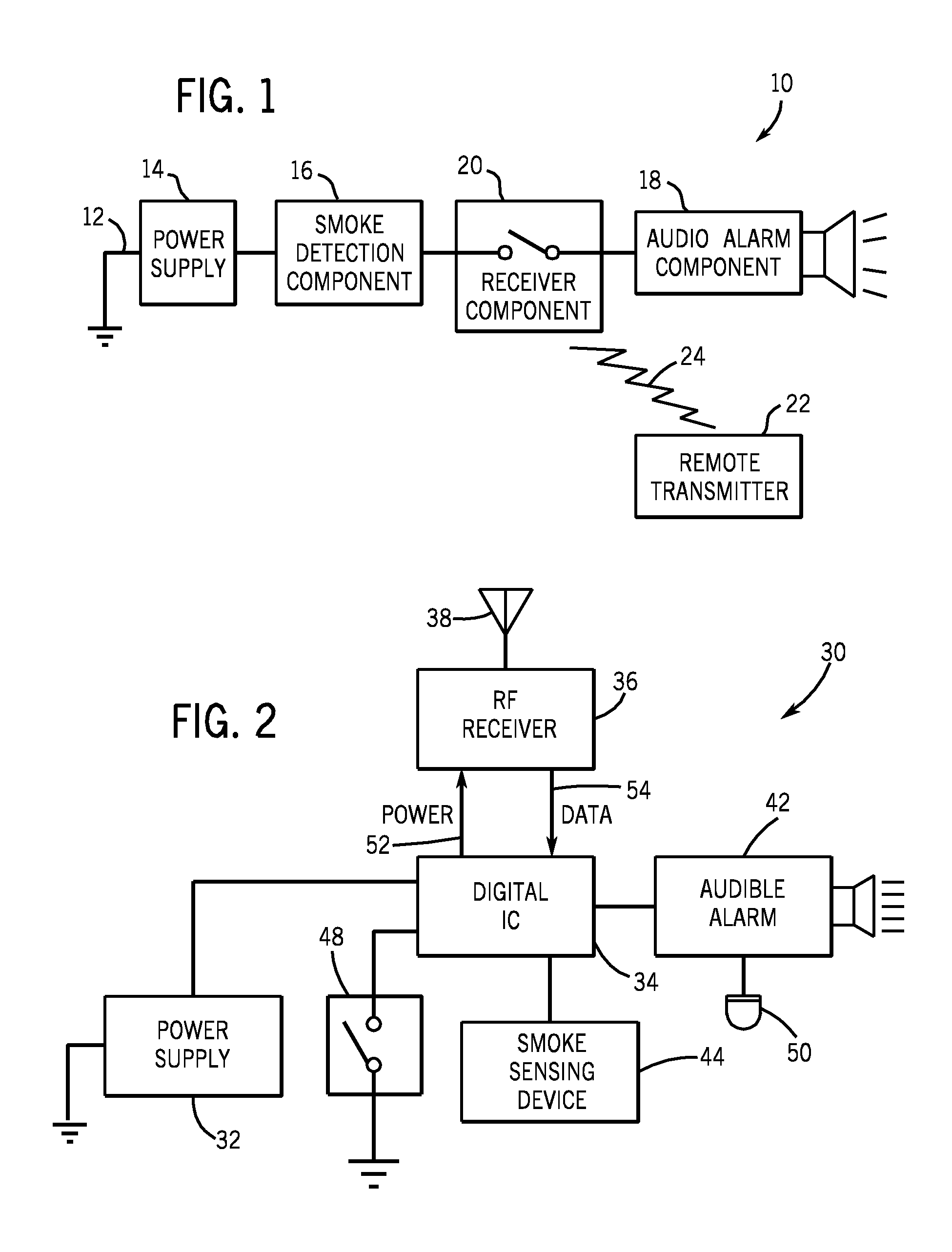Smoke detector with remote alarm silencing means
a smoke detector and remote alarm technology, applied in the direction of fire alarms, fire alarm smoke/gas actuation, instruments, etc., can solve the problems of inability to work anyway, requiring the user to repeat futile activity, hazardous, or even deadly conditions, etc., to achieve convenient repositioning, easy detection, and easy silence of the alarm of the smoke detector
- Summary
- Abstract
- Description
- Claims
- Application Information
AI Technical Summary
Benefits of technology
Problems solved by technology
Method used
Image
Examples
Embodiment Construction
[0028]Referring now to the drawings in detail, wherein like numbered elements refer to like elements throughout, FIG. 1 illustrates a simplified schematic diagram of a first preferred embodiment of the circuit, generally identified 10, that is used in the smoke detector of the present invention. The circuit 10 includes a power supply 14, a smoke detection component 16, an audio alarm component 18, and a receiver component 20. These components are electrically connected 12. The circuit 10 also includes a component that is not electrically connected to the other components in the usual sense. More specifically, the circuit 10 includes a remote wireless transmitter 22 that emits and transmits electromagnetic waves 24 to actuate the receiver component 20 of the circuit 10. The remote transmitter 22 operates on conventional direct current batteries of the type that are compact and commercially available today. The precise voltage is not a limitation of the present invention. The preferre...
PUM
 Login to View More
Login to View More Abstract
Description
Claims
Application Information
 Login to View More
Login to View More - R&D
- Intellectual Property
- Life Sciences
- Materials
- Tech Scout
- Unparalleled Data Quality
- Higher Quality Content
- 60% Fewer Hallucinations
Browse by: Latest US Patents, China's latest patents, Technical Efficacy Thesaurus, Application Domain, Technology Topic, Popular Technical Reports.
© 2025 PatSnap. All rights reserved.Legal|Privacy policy|Modern Slavery Act Transparency Statement|Sitemap|About US| Contact US: help@patsnap.com



